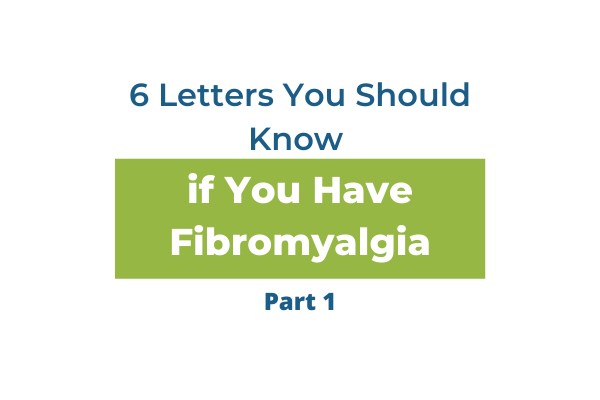Why should everyone with chronic pain or autoimmune disease know about LDN (low dose naltrexone)?
Because for many people it helps them, even if they’ve “tried everything”. That doesn’t mean it’s for everyone. What I say doesn’t mean diddly if it doesn’t help you. But LDN is something that most people don’t know about. And it’s something that helps many many people.
Some patients have told me it’s like a miracle. It’s not a miracle. But it’s often surprising when you’ve been told ‘there’s nothing else to help you’ and then something helps you. LDN for chronic nerve pain and inflammatory issues is applied physiology and common sense, and has some clinical trial support. It’s not a miracle. But it is a very safe choice that might help.
If you’re facing chronic disease or chronic pain, it’s very important to be open-minded. Conventional medicine doesn’t have all the answers.
Knowing that truth, is part of What Heals.
Stay open-minded, but not so open that your brain falls out.
Here’s a recent interview from the LDN radio show, that talks a bit about what is LDN and why it helps some people with chronic pain or autoimmune problems.LDN radio show march 2018
If you want to find out whether LDN may be helpful for you, contact the office or click here for more information.
Did you know?
Dr Shiller is available for telemedicine consultation worldwide regarding chronic pain, fibromyalgia, autoimmune disease, fatigue, and stress-related illness. Contact the office or schedule a consultation at www.drshiller.com
Inner Healing Essentials is an intensive six-week course taught by Dr Shiller, which teaches you the Six Steps To Inner Healing. It empowers you to transform stress into vitality, and begin to take back your life from chronic pain and illness. A new class begins quarterly. To get more info and be notified of the next start date: https://andrew-david-shiller.mykajabi.com/inner-healing-essentials-waitlist.
Join my email community and get notified about new content and transformative self-healing skills.
6 Letters You Should Know if You Have Fibromyalgia: Part 1
Posted on by Andrew David Shiller, MD


Fibromyalgia pain and fatigue are very difficult and disabling symptoms. Many people are told by their doctors that the only option for pain reduction is medications like Lyrica, Cymbalta, and others, or psychotherapy and exercise.
My experience, and the science of fibromyalgia, say differently.
Fibromyalgia isn’t hopeless. But for most people, there is no miracle cure.
On the other hand, if you are open-minded and willing to try some rational things, you can likely address the biological imbalances that underlie the pain, fatigue and other symptoms of fibromyalgia. Then you’re on the road to feeling better.

Two Molecules You Should Know
This post talks about two different molecules that help many people with fibromyalgia and other kinds of chronic pain. The six letters you should know are: LDN and PEA These two will be discussed in two different posts, so you can focus on one at a time. As a medical doctor who has treated thousands of people with fibromyalgia and chronic pain, I find LDN and PEA very interesting. The first reason is that there are some research studies showing plausible mechanisms and also clinical effects on pain and other symptoms. The second reason is that they both go “upstream” from the pain symptom and get closer to the root cause of your pain, compared to pain medications.Getting Closer to the Source of Pain
When speaking about “upstream” we mean that they work on one or more of the mechanisms of what causes the pain, rather than just blocking the pain. Let’s try to understand that. The conventional view of fibromyalgia is that the pain processing system is sensitized. This means that things which wouldn’t normally hurt a healthy person, can result in pain in someone with fibromyalgia. But conventional medicine is unable to say why it is sensitized. Despite that, we do have growing research looking at a number of pathways by which the pain processing amplifiers in the brain and spinal cord can be “turned up”. There are potential roles for stress hormones, sleep disturbance, and perhaps most importantly, inflammation. The last twenty or so years have shown an explosion of research showing that “sterile inflammation” or immune imbalance are drivers of most chronic illness. Fibromyalgia included. In the case of fibromyalgia, we know that there are changes in immune chemicals called cytokines. These cytokines are present not only in the peripheral blood but also in the brain and spinal cord. We also have evidence that there is an activation of brain-based immune cells called microglia. Microglial activation causes an increase in a brain-stimulating chemical called glutamate. Too much glutamate creates “excitability” of the brain, and that can explain increased pain, mood changes, and even psychiatric illness, sleep disturbance, irritable bowel syndrome, hormonal abnormalities, and small fiber neuropathy. LDN and PEA both seem to reduce microglial activation and inflammatory cytokines. Both have been shown to reduce pain and help with other symptoms like irritable bowel, mood disturbances, and so on.The First Three Letters You Need to Know: LDN
LDN is “Low Dose Naltrexone.” LDN stimulates your body to produce more of its own natural pain-blocking chemicals called endorphins or enkephalins. These are compounds that are present in your body already. Every organ in your body has receptors for these compounds. There is evidence that many people with fibromyalgia have reduced the activity of endorphins and enkephalins. Besides blocking pain, enkephalins reduce the activity of immune cells that produce inflammatory chemicals. These inflammatory chemicals, called cytokines, have been implicated in many symptoms that are experienced by people with fibromyalgia, including increased pain sensitivity, brain fog, and fatigue. LDN is a totally different thing than the usual use of Naltrexone. In higher doses, naltrexone blocks the body’s opioid system. This is why it is often prescribed by people with substance abuse to help them avoid using alcohol or narcotic drugs. A few decades ago, it was discovered that the same medication could have a profound effect on chronic pain and inflammation when used a much lower dose. That’s how LDN came into use for pain and inflammation.
The Non-Drug, Drug
LDN works in a way that is quite unusual for medications. Most medications have some kind of direct action on the body, and this creates their therapeutic effect. For instance, opioid medicines like Tramadol or Oxycodone directly bind opioid receptors, and that leads to blocking pain signals. Or if you take thyroid replacement, it is processed by your body, and then it binds to thyroid hormone receptors and stimulates cellular activity. In contrast, LDN itself doesn’t block pain or inflammation. It temporarily blocks your opioid receptors for several hours. This triggers your body to produce more of its own naturally occurring opioids. So your body’s own natural opioids block pain and exert the immune-modulating effects of LDN.Does LDN Really Work?
While there is nothing that is 100% effective, LDN works in many cases. The existing clinical trials have shown promising results. LDN appears to reduce pain in people with fibromyalgia, and also reduce inflammatory cytokines in the body. It appears to reduce the activation of glial cells. These are the brain cells that are often overactive in fibromyalgia, and they can contribute to a variety of symptoms, including increased pain and brain fog. Because of its subtle anti-inflammatory effects, LDN is used in a variety of pain and inflammatory syndromes. Small studies have shown benefit in fibromyalgia, chronic fatigue syndrome, depression, chronic regional pain syndrome (CRPS), Crohn’s disease, ulcerative colitis, irritable bowel syndrome, Multiple Sclerosis (improved symptoms), and some skin conditions. In my clinical experience, LDN works very well for many people. In some cases, there are people for whom it has literally made their fibromyalgia “go away”. More commonly, it results in a significant improvement in pain, energy, and often mood. Other diagnoses in which I’ve seen notable improvement include Hashimotos thyroid disease, ulcerative colitis, Crohn’s disease, psoriatic arthritis, osteoarthritis. For people who are interested in a pharmacologic treatment for fibromyalgia, especially patients who are pursuing lifestyle measures in their healing, LDN is my first-line recommendation at this point.Is LDN Safe?
There are well-designed small trials demonstrating clinical effect and mechanism of action. Available evidence suggests that LDN is a safe medication, and naltrexone itself has a long safety record. While there are no large long-term randomized controlled trials of LDN, I suspect that won’t change because it’s a generic drug and there is no profit incentive to pursue large clinical trials.Are There Common Side Effects?
The most common side effects of LDN appear to get better when you stop the medication. Issues that I’ve seen in my practice are similar to what is shown in the available research. That includes vivid dreams, insomnia, increased pain, sleepiness, headache, abdominal discomfort, and nausea. Some people decide not to continue it because of side effects.Conclusion
LDN is a relatively safe, non-typical medication that helps many people with fibromyalgia. The risk/benefit is pretty good compared to the other medications that get used for fibromyalgia. In contrast to typical pain meds, it has minimal likelihood of side-effects like sleepy, groggy, zombie feeling that often happens with Lyrica or Gabapentin. LDN has the advantage of often addressing multiple fibromyalgia symptoms, including pain, irritable bowel, and fatigue. However, because it is ‘off label’, many doctors don’t know about it. So you might have to do some effort to find someone to prescribe it locally. There are some doctors who are willing to prescribe by virtual visit. To find a local doctor who provides it, you may check out the provider directory at the LDN Research Trust website, or feel free to contact my office. Stay tuned for Part 2 where we discuss PEA. You can get notified of when it’s posted, and join the email community at this link: www.whathealsfibromyalgia.com Please feel free to share this article with anyone who you know is suffering from pain or fibromyalgia and could benefit from the information given. You can see a short video that speaks about LDN and Fibromyalgia on my Youtube channel: https://www.youtube.com/watch?v=m_uUkInZ1OQ Note: This article is for informational purposes only. There is no doctor-patient relationship here, and this article is not medical advice. Please consult your doctor about any therapeutic choices you might make. ******REFERENCES
1 Desmeules, Jules, Jocelyne Chabert, Michela Rebsamen, Elisabetta Rapiti, Valerie Piguet, Marie Besson, Pierre Dayer, and Christine Cedraschi. “Central Pain Sensitization, COMT Val158Met Polymorphism, and Emotional Factors in Fibromyalgia.” The Journal of Pain 15, no. 2 (February 2014): 129–35. https://doi.org/10.1016/j.jpain.2013.10.004. 2 Ramanathan, Seethalakshmi, Jaak Panksepp, and Brian Johnson. “Is Fibromyalgia An Endocrine/Endorphin Deficit Disorder? Is Low Dose Naltrexone a New Treatment Option?” Psychosomatics 53, no. 6 (November 2012): 591–94. https://doi.org/10.1016/j.psym.2011.11.006. 3 Üçeyler, Nurcan, Winfried Häuser, and Claudia Sommer. “Systematic Review with Meta-Analysis: Cytokines in Fibromyalgia Syndrome.” BMC Musculoskeletal Disorders 12, no. 1 (December 2011): 245. https://doi.org/10.1186/1471-2474-12-245. 4 Rodriguez-Pintó, Ignasi, Nancy Agmon-Levin, Amital Howard, and Yehuda Shoenfeld. “Fibromyalgia and Cytokines.” Immunology Letters 161, no. 2 (October 2014): 200–203. https://doi.org/10.1016/j.imlet.2014.01.009. 5 Behm, Frederick G, Igor M Gavin, Oleksiy Karpenko, Valerie Lindgren, Sujata Gaitonde, Peter A Gashkoff, and Bruce S Gillis. “Unique Immunologic Patterns in Fibromyalgia.” BMC Clinical Pathology 12, no. 1 (December 2012): 25. https://doi.org/10.1186/1472-6890-12-25. 6 Parkitny, Luke, and Jarred Younger. “Reduced Pro-Inflammatory Cytokines after Eight Weeks of Low-Dose Naltrexone for Fibromyalgia.” Biomedicines 5, no. 4 (April 18, 2017): 16. https://doi.org/10.3390/biomedicines5020016. 7 Younger, Jarred, Luke Parkitny, and David McLain. “The Use of Low-Dose Naltrexone (LDN) as a Novel Anti-Inflammatory Treatment for Chronic Pain.” Clinical Rheumatology 33, no. 4 (April 2014): 451–59. https://doi.org/10.1007/s10067-014-2517-2. 8 Kadetoff, Diana, Jon Lampa, Marie Westman, Magnus Andersson, and Eva Kosek. “Evidence of Central Inflammation in Fibromyalgia — Increased Cerebrospinal Fluid Interleukin-8 Levels.” Journal of Neuroimmunology 242, no. 1–2 (January 2012): 33–38. https://doi.org/10.1016/j.jneuroim.2011.10.013. 9 Albrecht, Daniel S., Anton Forsberg, Angelica Sandström, Courtney Bergan, Diana Kadetoff, Ekaterina Protsenko, Jon Lampa, et al. “Brain Glial Activation in Fibromyalgia – A Multi-Site Positron Emission Tomography Investigation.” Brain, Behavior, and Immunity 75 (January 2019): 72–83. https://doi.org/10.1016/j.bbi.2018.09.018. 10 Patten, D.K., Schultz, B.G., Berlau, D.J., 2018. The Safety and Efficacy of Low-Dose Naltrexone in the Management of Chronic Pain and Inflammation in Multiple Sclerosis, Fibromyalgia, Crohn’s Disease, and Other Chronic Pain Disorders. Pharmacotherapy 38, 382–389. https://doi.org/10.1002/phar.2086 11 Low Dose Naltrexone: Side Effects and Efficacy in Gastrointestinal Disorders [WWW Document], n.d. . IJPC. URL https://ijpc.com/Abstracts/Abstract.cfm?ABS=3116 (accessed 3.1.20).
LinkedIn
Join my email community and get notified about new content and transformative self-healing skills.
Join my email community and get notified about new content and transformative self-healing skills.
I respect your privacy and will never share your email. Unsubscribe any time.

